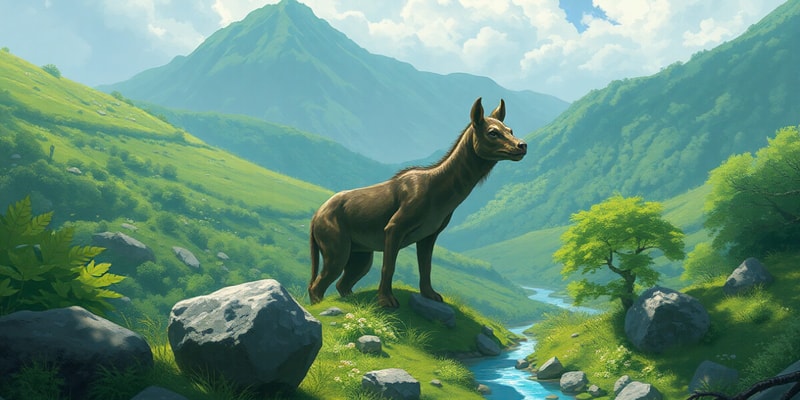Podcast Beta
Questions and Answers
What are the three levels of performance ranges for organisms according to environmental conditions?
Which of the following describes a resource in an ecological context?
How does the status of oxygen differ between terrestrial and aquatic environments?
What does competition among organisms typically arise from?
Signup and view all the answers
What is the definition of conditions in an ecological context?
Signup and view all the answers
Which of the following correctly describes the relationship between conditions and resources?
Signup and view all the answers
Which of the following statements about species performance is true?
Signup and view all the answers
Which of the following is not an example of a condition that affects organisms?
Signup and view all the answers
Study Notes
Performance Curves
- Species performance is defined by three key factors: survival, growth, and reproduction.
- Each factor is influenced by the intensity of environmental conditions, such as temperature, pH, or salinity.
Conditions
- Conditions are physical or chemical features of the environment that are not consumed.
- Common examples include: temperature, humidity, pH, and salinity.
Resources
- Resources are things that are consumed by organisms.
- For plants, resources include: sunlight, water, and mineral nutrients.
- For animals, resources include: food organisms, nesting sites, and shelter.
- Resources are depleted once consumed, leading to competition among organisms.
Condition vs. Resource
- Some things consumed can behave like a condition or a resource depending on the context.
- For example, oxygen can behave as a condition in a terrestrial environment as it is readily available and cannot be depleted.
- In an aquatic environment, oxygen can become depleted by respiration, thus behaving like a resource.
Studying That Suits You
Use AI to generate personalized quizzes and flashcards to suit your learning preferences.
Related Documents
Description
Explore the factors that define species performance, including survival, growth, and reproduction. Understand the differences between environmental conditions and resources, as well as their impact on ecological competition. This quiz will challenge your knowledge of these key ecological concepts.




